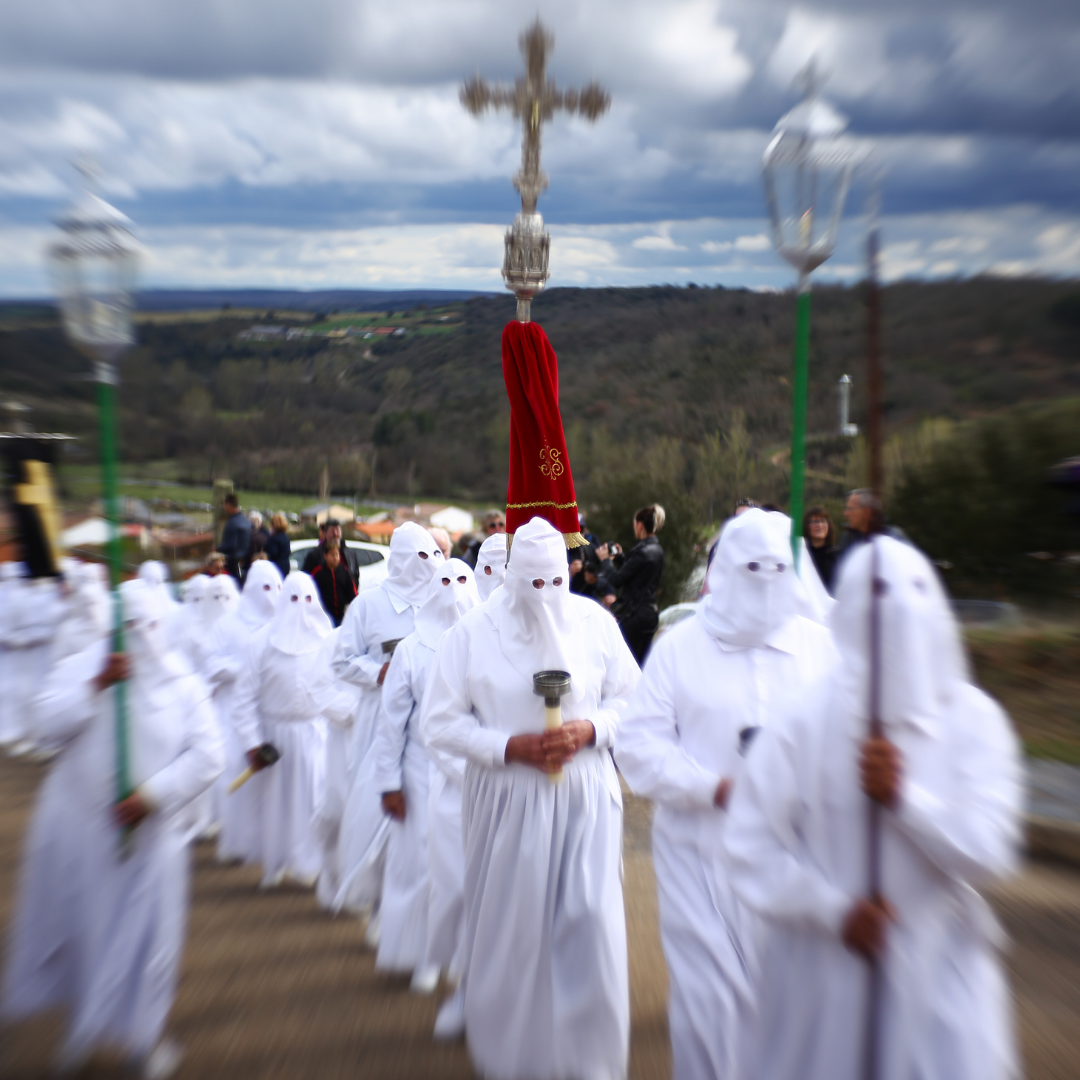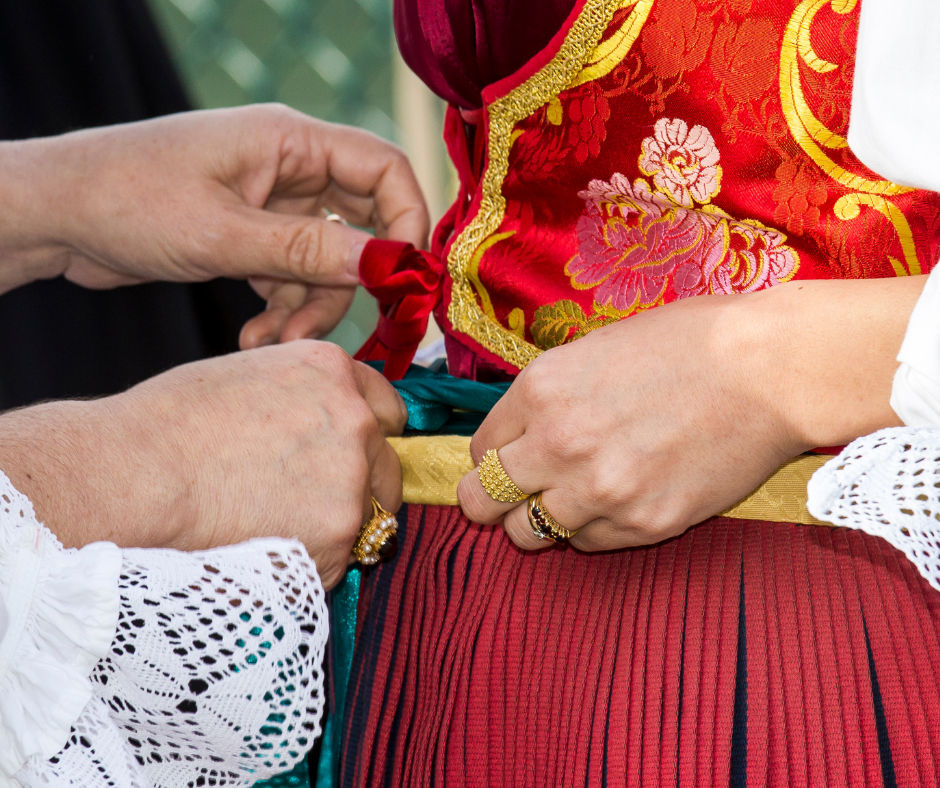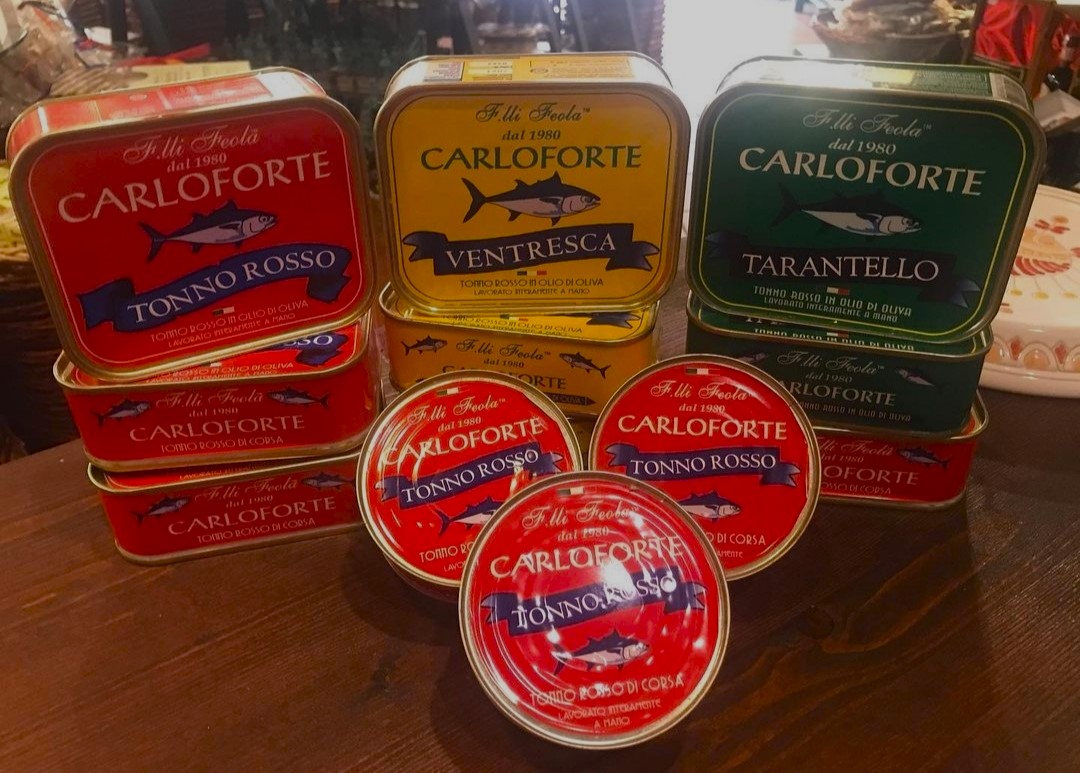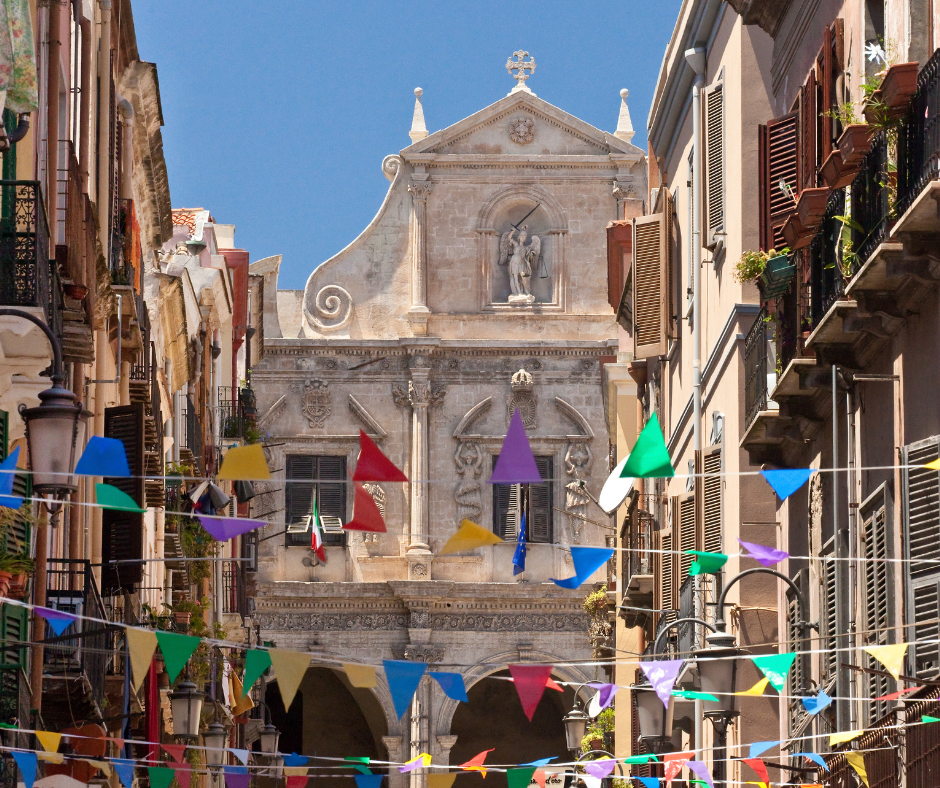7 Of The Best Spring Festivals In Sardinia
That You Should Not Miss.
Many people ask me: what do I do in Sardinia in the spring months? So, inspired by this question I wrote a dedicated article 'Spring In Sardinia: Reasons To Visit And Things To Do' but while writing it I realised that I had to write an article dedicated to Sardinian festivals, because they are very special events and simply mentioning them in an article is not enough to celebrate their beauty and uniqueness.
Throughout the year, Sardinia celebrates festivals and events, some religious, some related to customs and traditions, and others to local food and wine. Some of these events have become so famous that they attract many tourists. Most of these events have been held for many years and at the same time of year. Here are some of the festivals that take place in spring in Sardinia:

Easter Celebrations
Holy Week in Sardinia is a unique and exciting experience. It is characterised by centuries-old traditions of Spanish origin that blend with ancient customs, both pagan and religious and that change depending on where you are in Sardinia. The most important moments of Holy Week are:
- Palm Sunday to celebrate the arrival of Jesus in Jerusalem. During mass, people have the custom of carrying an olive or palm twig to have them blessed during the service, and to keep them as a symbol of peace.
- The Procession of the Mysteries; is a procession in which the statue of Christ and the various symbols representing his suffering are carried through the streets.
- Su Scravamentu, which takes place on Good Friday, the removal of Christ from the Cross, his deposition, and the procession of the dead Christ through the streets of the towns.
- The meeting between the statue of Jesus and the Madonna ('S'Incontru') takes place on Easter Sunday.
The rites of Holy Week are organised and supervised by the confraternities that parade in their striking costumes, singing religious songs in Latin and Sardinian, whose origins date back to the Middle Ages. The Holy Week celebrations are held in a variety of locations, but the most important are in Castelsardo, Alghero, Cagliari, Cuglieri, and Iglesias.
Cagliari, Sagra di Sant'Efisio
The feast of Saint Ephisius has been held in Cagliari for many years. It is considered the feast of all Sardinia because it attracts hundreds of faithful from all parts of Sardinia who parade through the streets of Cagliari in their colourful and diverse traditional costumes. The procession includes festively decorated carts (traccas in Sardinian) drawn by oxen and decorated with fruit and flowers, horsemen, songs, sounds, flowers, and above all, colours.
This feast has been held every year on 1 May since 1652, when the city authorities vowed to celebrate Saint Ephisius Martyr, a Roman soldier who was imprisoned in a district of Cagliari called Stampace and executed on the beach of Nora. According to a legend, the inhabitants of Sardinia stricken by a disease stopped dying when Saint Ephisius, shortly before being executed for being guilty of converting to Christianity, vowed to protect Cagliari and its inhabitants forever. With the feast of Saint Ephisius, every spring, the Sardinians honour this promise with deep devotion and sincere gratitude.
To buy tickets to see Sant' Efisio parade visit this link or contact NxtStop Sardinia for info

Sassari, la Cavalcata Sarda
The Sardinian Cavalcade is a cultural and folkloristic event that takes place in Sassari on the second-to-last weekend of May. The event originated on 20 April 1899, when a parade of Sardinian costumes was organised in honour of Umberto I of Savoy and Queen Margherita, who had come to the city for the inauguration of the statue of Victor Emmanuel II that Giuseppe Sartorio had erected in Piazza d'Italia.
La Cavalcata Sarda starts in the morning with a parade on foot, on horseback or on traccas (characteristic floats decorated with flowers), of groups from all over Sardinia. The participants wear the characteristic costume of their place of origin, often embellished with elaborate embroidery and filigree jewellery. The event continues in the afternoon in the city's hippodrome where horses and riders perform the ‘Pariglie' in which the horse riders perform acrobatic figures on running horses, ending in the evening in the Piazza d'Italia with shows dedicated to traditional Sardinian songs and dances.
Carloforte, Girotonno (Tuna Festival)
Girotonno is a food and wine event that grows in popularity each year, including on an international scale. It consists of four days of events centred on tuna fish, which is traditionally fished in the waters around the island. Throughout the days, it is possible to participate in live music, live cooking, and tasting of traditional tuna dishes: tunnina, cassuli, and curzetti, served in ceramic bowls and accompanied by white wine, for a symbolic cost of a few euros.
The tuna competition, however, is the event's most important moment: an international gastronomy competition involving chefs from six countries. The winning dishes will be decided by a technical and popular jury.
To know more visit www.girotonno.it

Tonnara, the Nougat Festival
Oh, delicious Nougat. What a sweet confectionary whose origin is unknown but has been enjoyed for centuries in Europe, especially in France, Spain and in Italy and in Arabic countries. This sweet is usually made from honey, almonds, and egg whites and Italians called it Torrone. Even though nougats can have different flavors this sweet in Sardinia is made with honey, almonds, hazelnuts, and egg whites. Every year, on Easter Monday, Tonara in the province of Nuoro in Central Sardinia celebrates the 'Nougat Festival.'
If you miss the festival, don't worry you can find Sardinian torrone at almost every event on the island among the stalls selling handicrafts.
Here you can find the recipe for the Sardinia nougat
Sa Die de Sa Sardigna
The feast honours the Sardinian people's insurgency of April 28, 1794, when the Piedmontese and Viceroy Balbiano were expelled from Cagliari. The insurgency arose because of the Piedmontese's treatment of the Sardinians, who were prohibited from participating in political and administrative activity by royal order. The feast, which was first held in Cagliari in 1993, is now celebrated throughout all the island's major cities, with commemorations of historical events, concerts, and folklore performances.

Gallura, la Primavera in Gallura
The Primavera in Gallura (Spring in Gallura) event aims to promote the civic, cultural and musical traditions of this picturesque region of Northern Sardinia. It is the biggest event in Gallura, and its purpose is to remind the next generation of their heritage and traditions. The event aims to retrace the ancient paths of transhumance. Stage after stage, it revives the typical customs and traditions of the local peasant culture, allowing visitors to experience the flavours of traditional Sardinian cuisine and learn about handicrafts through Gallura craftsmen's exhibitions in the sectors of ceramics, carpets, cork, and agri-food. The event travels to various Gallura villages and connects the natural beauty of the coastline with the customs and distinctiveness of local products.
Conclusions: Don't miss Sardinia's festivals if you want to experience the island's culture, discover its history and savour the delicious local cuisine.
Are you curious to know more about Sardinia?
Check our tour templates
Check our Holiday ideas page
and contact us for a customised tour!




